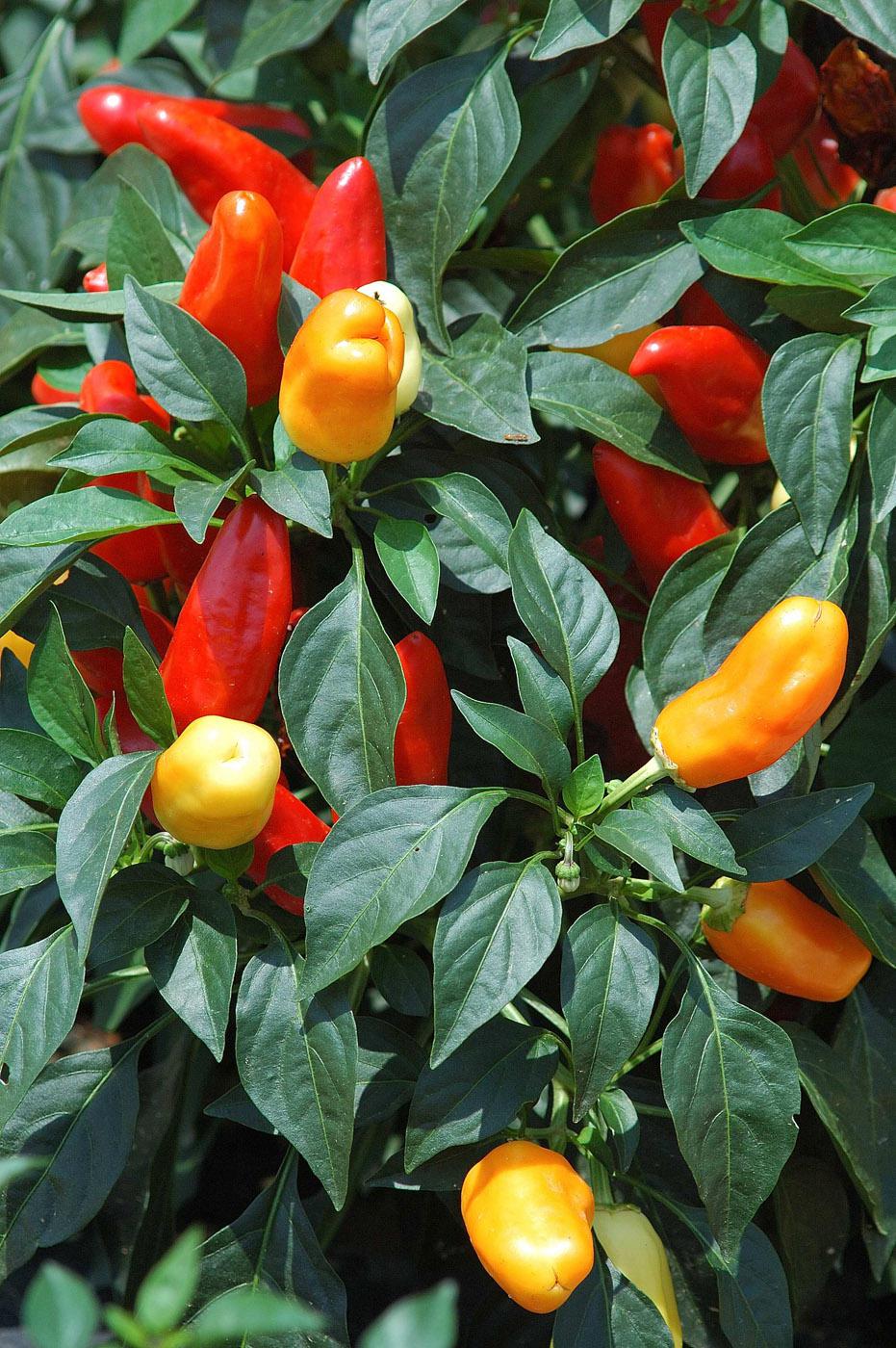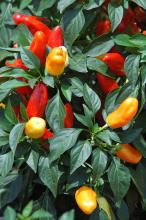Information Possibly Outdated
The information presented on this page was originally released on September 24, 2009. It may not be outdated, but please search our site for more current information. If you plan to quote or reference this information in a publication, please check with the Extension specialist or author before proceeding.
Sweet Pickle pepper makes gardens festive
By Norman Winter
MSU Horticulturist
Central Mississippi Research & Extension Center
If you would like to give your garden a festive fall atmosphere, then find a prominent place to put in ornamental peppers. Their blooms are not noteworthy, but varieties like Sweet Pickle and Garda Tricolore have fruit that will show off like Christmas lights.
Ornamental peppers are one of the plants that leap off the garden center shelves this time of the year. If you love them in the fall, try growing them all season.
Mississippi State University has been evaluating ornamental peppers in variety trials. Sweet Pickle is one that has kept me mesmerized. There are several I like, but this pepper is different. It has fruit that is 2 inches long and reminds me of the big, bold Christmas tree lights we used to have before we started using miniature versions.
Many ornamental peppers are edible, and a lot of them are flaming hot. Sweet Pickle is sweet rather than hot and loads up with a bounty of red, orange, yellow and purple fruit all at one time. It is a compact plant that is perfect for the landscape or vegetable garden. Its large fruit can be seen from a great distance, making it a landscape asset.
The other one in our trials that is exceptional is Garda Tricolore, which originates from a source in the Netherlands and is hot. It, too, resembles Christmas lights but on a much smaller scale. Don’t let the word “smaller” deter you, however, because what it lacks in size it makes up for in quantity.
Garda Tricolore produces scores of peppers that start purple then change to cream, orange and red. These peppers are almost as long as Sweet Pickle but not as wide.
These are two really colorful selections you may want to try, but don’t miss out on the opportunity to grow Black Pearl, Calico and Purple Flash, the one with showy iridescent purple leaves.
Ornamental peppers like these and others you may find at your garden center make perfect companions at this time of year for asters, mums and late season marigolds, sunflowers and zinnias.
If you shop for ornamental peppers next spring, you will have a ton of options. Try partnering them with lime green selections of coleus or gold lantana, or use them in a tropical setting where they look right at home with bananas, cannas and elephant ears.
Whether you plant now or in the spring, grow the ornamental pepper much as you would the bell pepper. Before removing the peppers from their containers, dig their holes in the garden soil. Gardeners know they can plant a tomato deeper than it grew in the container, but you must plant the pepper at the same depth it is presently growing.
Feed your peppers with a complete garden fertilizer, preferably one that is higher in phosphorous, such as a 10-20-10. Apply 2 tablespoons per plant at three- to four-week intervals. You can use dilute, water-soluble fertilizer every other week if you prefer or if you’re growing them in a container.
Keep your plants watered and mulched through the long growing season, and they will give you an unfailing performance.




